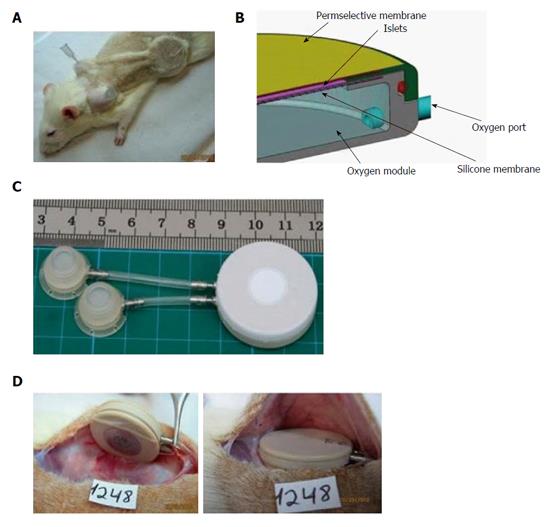Copyright
©The Author(s) 2016.
World J Transplant. Mar 24, 2016; 6(1): 69-90
Published online Mar 24, 2016. doi: 10.5500/wjt.v6.i1.69
Published online Mar 24, 2016. doi: 10.5500/wjt.v6.i1.69
Figure 7 The rat variant of the β-Air device.
A: Shaved animal demonstrating relative positions of the device, connecting tubes, and access ports. A syringe needle used for gas refueling is inserted into one of these ports; B: Schematic illustration of the device. Size of the gas chamber and the islets module is shown; C: The macrochamber and connected access ports (each square is 1 cm × 1 cm); D: Implantation of the device under the skin of diabetic recipient (the inactive surface faces the skin and the active surface faces the fascia).
- Citation: Barkai U, Rotem A, de Vos P. Survival of encapsulated islets: More than a membrane story. World J Transplant 2016; 6(1): 69-90
- URL: https://www.wjgnet.com/2220-3230/full/v6/i1/69.htm
- DOI: https://dx.doi.org/10.5500/wjt.v6.i1.69









